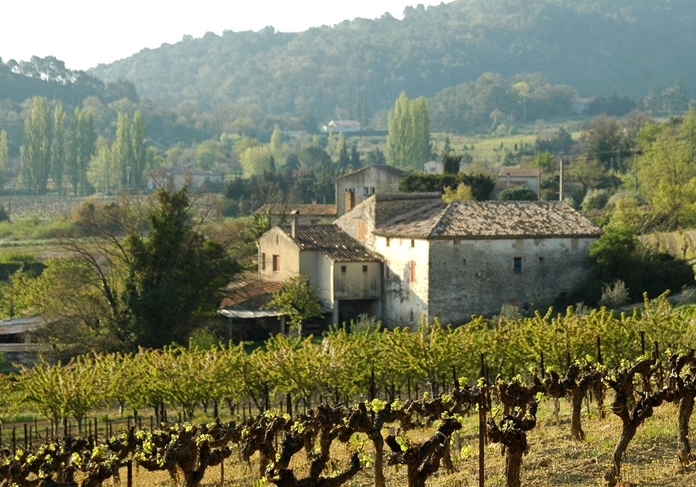
It’s a curious expression when you come to think about it, yet I suppose most English speakers know what it means. I think I was wearing them when I first visited Thailand over thirty years ago. Everything seemed so fresh, new and inviting; everyone warm and friendly and I became enchanted by the country. I don’t think I even noticed the dirt and piles of rubbish in the grubby sois of Bangkok. But why the colour “rose” I wonder?
In 2015, psychology researchers Andrew Elliot and Markus Maier wrote, “Given the prevalence of color, one would expect color psychology to be a well-developed area. Surprisingly, little theoretical or empirical work has been conducted to date on color’s influence on psychological functioning, and the work that has been done has been driven mostly by practical concerns, not scientific rigour.”
Even so, in popular imagination colours often tend to be associated with human feelings or emotion. Past experiences, cultural influences, personal taste, and other factors probably influence how individuals respond to particular colours. In many cultures, rose-pink is often considered a peaceful colour associated with love, kindness, and femininity. Remember the old wives’ adage about “blue for a boy and pink for a girl”? It seems that colour associations are reinforced from an early age.
So what about pink wine? It’s usually described as rosé, a French word meaning much the same thing. If you are of a certain age you may recall Mateus Rosé, a brand created in 1945 and designed for mass market appeal. It’s sweet and slightly fizzy and still going strong in its distinctive flask-shaped bottle. Rosé wine has come a long way from being the simple glugger of the 1970s, when Hugh Johnson wrote, “Buy the cheapest rosé you can find, for there is not much to choose between them.” Today of course, that is no longer true. Rosé has achieved popularity largely because it has become so much more interesting. It is no longer chic to be sniffy about rosé. In France, more than one in five bottles of wine sold is rosé where it has become a popular light drink or apéritif.
Anyway, let’s get to business. By definition, rosé is a type of wine that incorporates some of the colour from the skins of red grapes. Almost any variety of red grapes can be used to make it, though Shiraz and Grenache are popular among winemakers. Rosé is aromatic, light and fragrant (or should be) with reminders of fresh cut flowers and ripe red fruits like strawberry and cherry. Sometimes there are tantalizing hints of delicate floral aromas, oranges, grapefruit or lychee. Rosé works well with most foods and for something to accompany a light snack it’s perfect, especially when served ice-cold. European rosé tends to be dry especially the dry-as-a-bone rosé from the South of France. If you prefer dry wine, stay with European rosé because many New World examples are usually on the sweet side. Many companies also make sparkling rosé.
You might be surprised to know that both red and white grapes produce clear, colourless juice when pressed. The colour comes almost entirely from the grape skins. There are several ways to make rosé but the most common is known as maceration (or soaking), which involves leaving the skins to soak in the newly-crushed grape juice for a limited amount of time. It can be anywhere between six to forty-eight hours, depending on the style of wine needed. And incidentally, rosé is rarely a simple pink. The colour can range from a pale “onion-skin” orange to a vivid near-purple, depending on the grape used and the length of the maceration.
You may be wondering where you can buy rosé in this neck of the woods. Rosé should always be consumed when it’s young and fresh, so it’s generally safer to buy it where you can be reasonably sure of a rapid turnover. Wine Connection has several branches in Pattaya and they have a few interesting rosé wines on offer including a couple of typical dry ones from the South of France. The online wine company Wine-Now.Asia appears to have a splendid selection of rosés from all over the world. There are many interesting examples under Bt 750 including the excellent Paul Jaboulet Parallèle 45 Rosé. If you’re prepared to fork out up to Bt 900 there some even more tempting offers from this company.
You might be surprised to know that rosé is also made in Thailand. One of the entry-level examples is Monsoon Valley Rosé which comes from Siam Winery. A bit further up-market is the excellent PB Valley Khao Yai Reserve Rosé which is a lovely dusky pink with tantalizing hints of orange. One of the most fascinating Thai rosés I have come across is the award-winning GranMonte Sukana Syrah Rosé, made from 100% Syrah grapes grown in Central Thailand. It’s a lively and refreshing wine with delightful fruity aromas and available online via the GranMonte website at about Bt 940. This is one of the best examples of a quality Thai rosé that you are likely to encounter. But don’t forget, always serve rosé really cold.
 |
 |
 |





